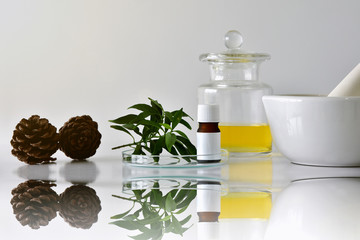Back to Wholesale Products Page
One of the most common question esthetic professionals ask when it comes to applying chemical peels is:
How long do I leave the peel on the skin?
This question is asked because that is what most skincare companies teach. There is much confusion as to how long a glycolic acid peel or lactic peel is left on the skin between one company versus another. While knowing the application time is an important factor, this is not the most important factor. Knowing the "time' is not an absolute. It is a generic guideline.
Majority of the companies fail to teach about "end points". These are referred to as visual end points.
The questions to ask yourself
- If a glycolic acid peel is recommended to be left on the skin from 3-8 minutes, how do you know whether to leave the peel on for 4 minutes versus 6 minutes?
- How does one company say to leave their 20% glycolic acid peel on the skin for 3 minutes and another company says to leave their 20% glycolic acid peel on for 5 minutes?
All chemical peels have visual end points
Focusing only on the application time is simplistic and does not take in to account the various skin types, skin conditions, prior skin treatments, clients home care or lack of, clients pain tolerance, lifestyle, and medications.
Understanding and applying visual end points allows the esthetic professional to get the best result from that peel application, while enabling the esthetic professional to minimize peel application complications.
Visual end points show you how that skin is responding to that peel.
For example, a skincare company states to leave the glycolic peel on for 5 minutes, while the clients skin has already developed "hot spots"(epidermolysis/frosting) at 3 minutes. In one to two days, the client develops crusting in those spots. The esthetic professional is wondering what happened. They followed the skincare companies instructions.
Visual end points tell you when to stop. It's time to neutralize.
Let's take a look at glycolic acid peels. They come in different concentrations(%), different pH's, and different bases( water, alcohol, water/alcohol, gel), We cleanse, and de-grease the skin. We apply the chosen glycolic acid peel.
How do we know when to begin neutralizing the peel?
Visually look for these end points:
- an even faint/slight pink
- an even all over rosy color
- areas or spots that are beginning to turn slightly from rosy to rosy-red
Areas or spot-areas that are beginning to change from rosy color to rosy-red, need to be neutralized immediately. Areas that tend turn to red quickly are middle cheeks,upper cheek bones, middle forehead and all wrinkle folds/depressions. Wrinkles depressions or creases are laugh lines, forehead lines, lines between brows, marionette lines, cleavage area, horizontal lines on the neck.
The face is not flat, but has hills and valleys. The valleys( aka creases or indentations) tend to "pool" the peel solution. Think of the indentation on the chin, or dimples( smile lines) or where the nostrils meet the face. Or an acne lesion that has been picked at. Look for these indentations on the skin. AHA exfoliation peels tend to produce an "itchy" feel on the skin rather than a burning sensation. Once we visually see these end points, we must immediately and rapidly, neutralize the peel.
What happens if we do not see any of these end points?
Consider choosing one of these options for the next peel:
- The peel concentration(%) needs to increase.
- The peel pH needs to be adjusted( aka: use lower pH).
- Adjust peel prep technique: moisten gauze pad with peel prep solution and wipe with firm back and forth/ciircular motion.
- Adjust peel application technique: moisten gauze pad with peel solution and "buff" the peel solution into the skin in circular motions.
Author:
Rita Page, CIDESCO, Master Aesthetician, Laser Technician, Cosmetologist


